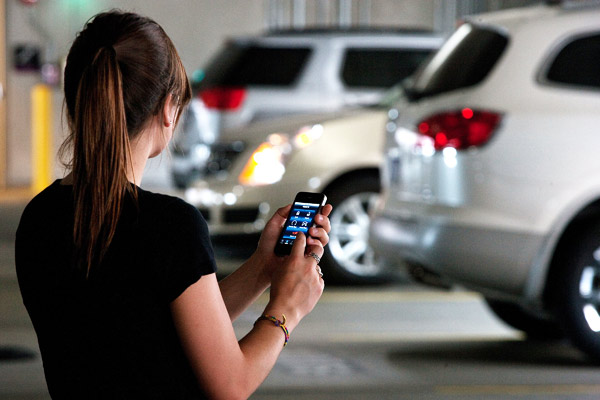With soaring gas prices and vehicle maintenance costs, traffic congestion, and other factors, commuters are looking for alternatives to traditional transportation. In recent years, passengers have turned to ridesharing services, such as Uber, to get around.
Uber is a downloadable app for your phone that links passengers with drivers. You’ll receive the driver’s name and photo, details of the car they are driving, and their contact information sent to your phone. The application uses GPS to track your location
and send a driver to you. You even receive a text when the driver arrives.

Uber is available in a multitude of cities worldwide and claims to provide reliable pickup, clear pricing, and convenient payment. Uber advertises a variety of vehicle services: (1) UberX typically features hybrid and mid-sized
vehicles; (2) UberBLACK uses town cars and luxury vehicles; and, (3) UberSUV accommodates larger parties of up to six passengers. The cost varies by the type of service requested. If you prefer a taxi, Uber has you covered through its UberTAXI service, which
it provides by contracting with local taxi companies.
Not only has the service been a welcome option for commuters, it has also provided individuals with the means to make extra money by becoming Uber drivers. Uber drivers use their own vehicles to pick up and transport passengers. Drivers reportedly keep 80%
of their fare, with the other 20% going directly to Uber. The flexibility of being able to make your own schedule and participate as little or as much as you want appeals to many who apply to drive for Uber. Passengers rate the driver at the end of the trip,
so the incentive is to make it a pleasant ride.
Although there are several advantages and glowing reports regarding rideshare services, there are some concerns. Safety issues and dangers—such as accidents caused by drivers, allegations of unwelcome advances, verbal and physical assaults on passengers,
and theft—top the list. Take appropriate measures, including taking care what you reveal to the driver, to ensure your safety when using a rideshare service. Although companies may claim their drivers are screened and go through a background check prior to
hire, the extent of the background search may not be sufficient.
Another issue that has Uber under fire is their surge pricing. During busy times when there are more customers than there are drivers—for example during peak hours, holidays, or in bad weather—Uber charges a surcharge and increases rates to get more drivers
on the road. Some users have complained that surge pricing is unfair. Others claim they aren’t aware of the fare increases until after their accounts are charged, although Uber states that users are always notified in big, bold print if surge pricing is in
effect. Further, Uber states users are required to type in specific information on the surge pricing confirmation screen to ensure they know the rates when fares are more than double.
Uber drivers that receive negative feedback can face suspension or termination. Some have conveyed how difficult it is to engage with the passenger while trying to drive safely, navigate the GPS, and manage the app at the same time. Some drivers claim Uber
fails to listen to their side of the story before deciding to terminate them after receiving a negative rating.
Other issues that have angered drivers are: (1) deductions taken to cover data plan use that is required for the Uber app to work on the company issued iPhone; (2) the apps’ “heat map” not working (which is supposed to show drivers the busiest areas); and,
(3) insurance coverage issues. If you are thinking of becoming an Uber driver, check with your insurance company to see if there are any gaps in coverage that may put you at risk. In some states, personal insurance will not cover you if you get into an accident
while using your vehicle for business purposes. Most insurance companies require commercial insurance if you are using your vehicle for livery cab purposes. Although the rideshare service company may be required to have $1 million in insurance, this may not
cover you or your vehicle if you get into a collision, only the riders and pedestrians.
Taxi and limousine companies have also come after services like Uber and have been lobbying to get regulators to block and, in some cases, ban rideshare services altogether. Many believe rideshare apps should be regulated in the same manner as taxi and for-hire
vehicle industries. State lawmakers are considering legislation specifically for rideshare services.
While our article only touches on some of the pros and cons of rideshare services, Business Consumer Alliance (BCA) would like to know your thoughts about rideshare services. If you have used the services of Uber or similar rideshare businesses, visit our
website to rate and review these companies. We want to know your opinion. Check out the
BCA report on Uber for some helpful tips to consider when using these types of services.
About The Author:
Nicole Pitts is a Senior Business Analyst for Business Consumer Alliance. She has been with the organization for 11 years and specializes in report writing, business evaluation, and investigations. Nicole corresponds with businesses regarding complaint
trends and provides suggestions to help them alleviate problem areas that may cause concern. She also conducts advertisement reviews, reports on government enforcement actions, and assists government agencies in obtaining information. She enjoys reading, movies,
and spending time with her family. Nicole can be reached by email at [email protected].